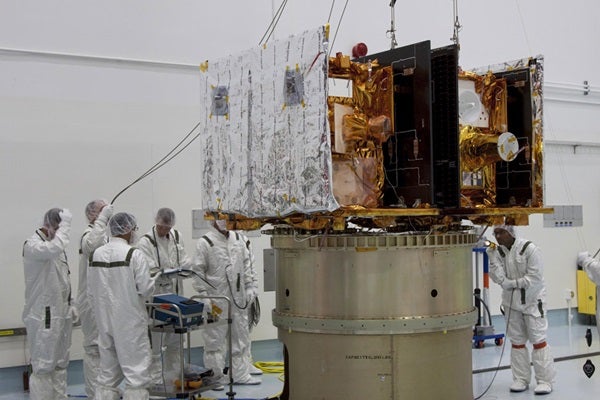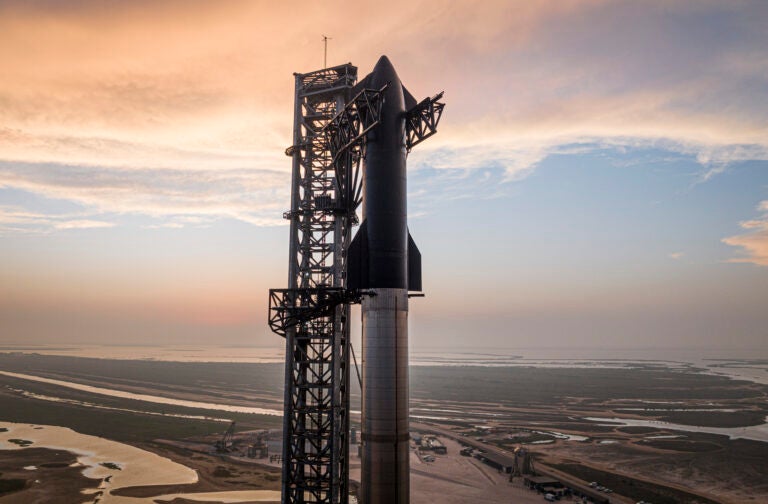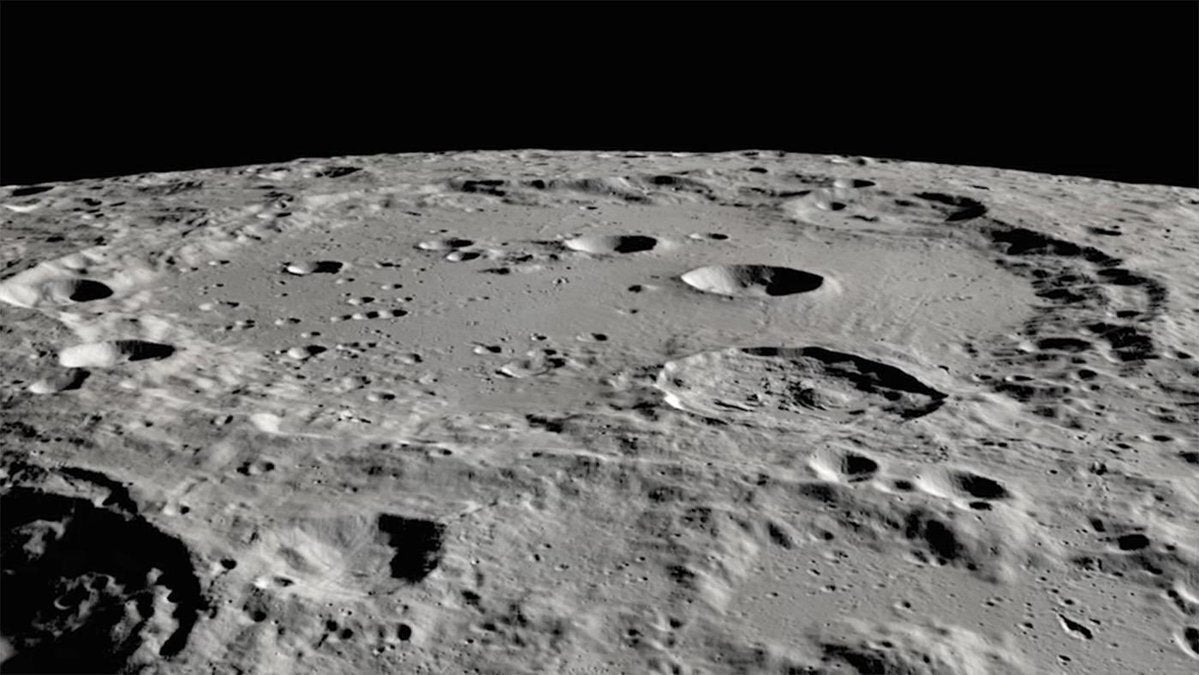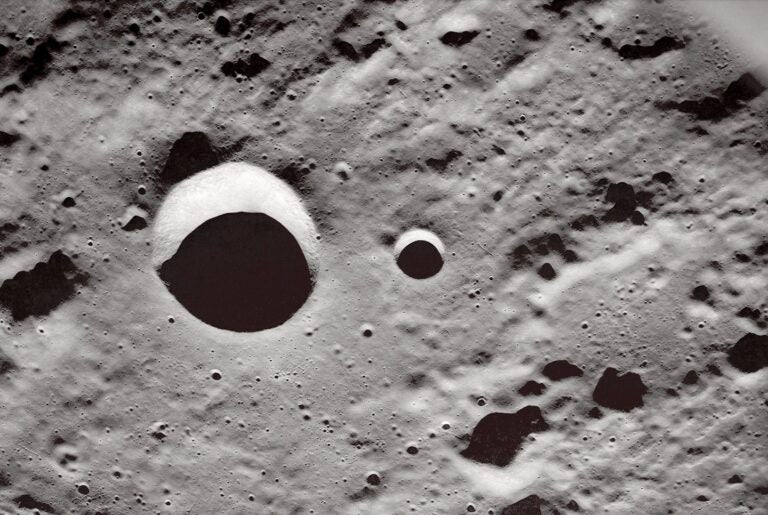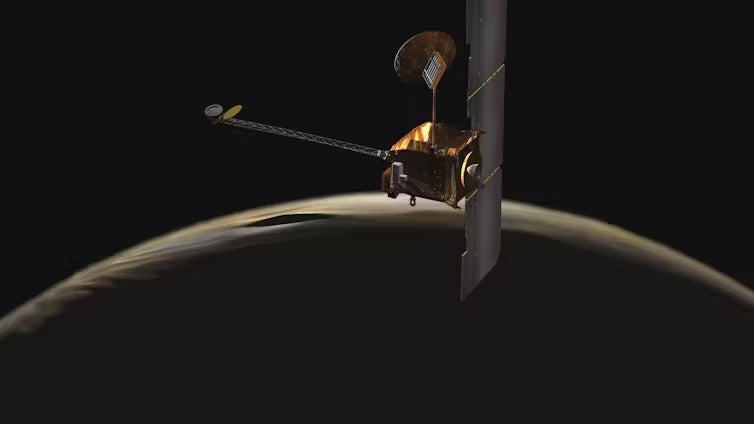The Gravity Recovery and Interior Laboratory (GRAIL) mission features twin spacecraft embarking on a challenging mission to map the Moon’s gravity.
“Trying to understand how the Moon formed and how it evolved over its history is one of the things we’re trying to address with the GRAIL mission,” said Maria Zuber from the Massachusetts Institute of Technology in Cambridge, Massachusetts. “But also, (we’re) trying to understand how the Moon is an example of how terrestrial planets, in general, have formed.”
“GRAIL is a mission that will study the inside of the moon from crust to core,” Zuber said.
The mission’s two spacecraft will fly in formation above the lunar surface to measure the variations in gravity. The mission seeks to reveal clues about our Moon’s thermal history and how the inner solar system’s rocky planets developed.
GRAIL is set to depart from Space Launch Complex 17B at Cape Canaveral Air Force Station in Florida on September 8 at 8:37 a.m. EDT.
Editors note: The first two launch dates for GRAIL were scrubbed. Next available launch window is September 10. There are two instantaneous launch opportunities at 8:29:45 a.m. and 9:08:52 a.m. EDT.
“Our team, especially, gets excited whenever we leave Earth orbit, and going to the Moon excites us and excites the public,” said Tim Dunn from NASA’s Kennedy Space Center.
The two spacecraft — called GRAIL-A and GRAIL-B — are riding into space side by side aboard a powerful Delta II Heavy rocket built by United Launch Alliance. It’s a rocket with an impressive reliability record.
“NASA has a terrific history with the Delta family of rockets,” Dunn said. “If we just look at the Delta II rocket, which is the version of the vehicle that we fly today, NASA has a perfect launch record, 48 for 48.”
The payload for NASA’s most recent lunar mission, called LRO-LCROSS, weighed in at 6,600 pounds (3,000 kilograms) and was the size of a minivan. It launched in 2009 aboard a massive Atlas V rocket. Compare that to the GRAIL spacecraft, which together weigh only about 1,600 pounds (725 kg). Each unit is about the size of a washing machine, designed to be compact and rugged.
“Whenever you have two spacecraft, it does increase the amount of work you have to do,” said Bruce Reid from the Kennedy Space Center. “Both spacecraft have to go through environmental testing. And then, for instance, on launch day, we have two dedicated teams — one to GRAIL-A and one to GRAIL-B. And they’ll have to individually power up each spacecraft, and go through their health checks, and put the spacecraft in the proper configuration for launch.”
After the climb to orbit, the GRAIL spacecraft will be released from the launch vehicle one at a time. Although most launches conclude with a single “spacecraft separation” — the moment when launch and mission personnel cheer a successful deployment — there will have to be two good separations for the GRAIL mission to begin.
“So we will definitely wait to celebrate until both spacecraft are safe and are on their translunar cruise to the Moon,” Reid said.
GRAIL’s journey to the Moon will take 3.5 months, a mission plan offering plenty of time for controllers to make sure the spacecraft are ready to get to work. The 42-day launch window opens September 8, but the probes’ arrival at the Moon will remain fixed, regardless of the liftoff date. GRAIL-A will reach the Moon on New Year’s Eve of 2011; GRAIL-B will follow on New Year’s Day of 2012.
Each spacecraft will have to execute a 38-minute lunar orbit insertion burn — enough to slow the forward speed by 427 mph (687 km/h). Once the spacecraft have slipped into lunar orbit, they’ll spend the next 5 weeks reducing their orbit period. Then, the twin orbiters will be maneuvered into formation, kicking off the mission’s 3-month science phase.
During the next 82 days, the Moon will rotate three times beneath the two GRAIL spacecraft as they calculate the gravity they encounter. Each 27-day rotation is called a “mapping cycle.”
“The lead spacecraft will accelerate — speed up — in response to a mass and cause the distance between the two to increase,” Zuber said. “Then, as the second spacecraft comes over this greater mass, it will speed up and get closer to the first spacecraft. So we’re essentially taking the distance between two points, and watching how that distance changes.”
The GRAIL mission also marks the first time students have a dedicated camera on board a planetary spacecraft. The digital video imaging system, called MoonKAM, will offer middle-school students the chance to request photography of lunar targets for classroom study. Sally Ride, the first American woman to fly in space, heads up the project.
The path from Earth to the Moon has been well traveled in recent decades by pioneers like Surveyor, the Apollo astronauts, Clementine, Lunar Prospector, and many more. Today, GRAIL is ready to take its place in this long line of lunar explorers.
The Gravity Recovery and Interior Laboratory (GRAIL) mission features twin spacecraft embarking on a challenging mission to map the Moon’s gravity.
“Trying to understand how the Moon formed and how it evolved over its history is one of the things we’re trying to address with the GRAIL mission,” said Maria Zuber from the Massachusetts Institute of Technology in Cambridge, Massachusetts. “But also, (we’re) trying to understand how the Moon is an example of how terrestrial planets, in general, have formed.”
“GRAIL is a mission that will study the inside of the moon from crust to core,” Zuber said.
The mission’s two spacecraft will fly in formation above the lunar surface to measure the variations in gravity. The mission seeks to reveal clues about our Moon’s thermal history and how the inner solar system’s rocky planets developed.
GRAIL is set to depart from Space Launch Complex 17B at Cape Canaveral Air Force Station in Florida on September 8 at 8:37 a.m. EDT.
Editors note: The first two launch dates for GRAIL were scrubbed. Next available launch window is September 10. There are two instantaneous launch opportunities at 8:29:45 a.m. and 9:08:52 a.m. EDT.
“Our team, especially, gets excited whenever we leave Earth orbit, and going to the Moon excites us and excites the public,” said Tim Dunn from NASA’s Kennedy Space Center.
The two spacecraft — called GRAIL-A and GRAIL-B — are riding into space side by side aboard a powerful Delta II Heavy rocket built by United Launch Alliance. It’s a rocket with an impressive reliability record.
“NASA has a terrific history with the Delta family of rockets,” Dunn said. “If we just look at the Delta II rocket, which is the version of the vehicle that we fly today, NASA has a perfect launch record, 48 for 48.”
The payload for NASA’s most recent lunar mission, called LRO-LCROSS, weighed in at 6,600 pounds (3,000 kilograms) and was the size of a minivan. It launched in 2009 aboard a massive Atlas V rocket. Compare that to the GRAIL spacecraft, which together weigh only about 1,600 pounds (725 kg). Each unit is about the size of a washing machine, designed to be compact and rugged.
“Whenever you have two spacecraft, it does increase the amount of work you have to do,” said Bruce Reid from the Kennedy Space Center. “Both spacecraft have to go through environmental testing. And then, for instance, on launch day, we have two dedicated teams — one to GRAIL-A and one to GRAIL-B. And they’ll have to individually power up each spacecraft, and go through their health checks, and put the spacecraft in the proper configuration for launch.”
After the climb to orbit, the GRAIL spacecraft will be released from the launch vehicle one at a time. Although most launches conclude with a single “spacecraft separation” — the moment when launch and mission personnel cheer a successful deployment — there will have to be two good separations for the GRAIL mission to begin.
“So we will definitely wait to celebrate until both spacecraft are safe and are on their translunar cruise to the Moon,” Reid said.
GRAIL’s journey to the Moon will take 3.5 months, a mission plan offering plenty of time for controllers to make sure the spacecraft are ready to get to work. The 42-day launch window opens September 8, but the probes’ arrival at the Moon will remain fixed, regardless of the liftoff date. GRAIL-A will reach the Moon on New Year’s Eve of 2011; GRAIL-B will follow on New Year’s Day of 2012.
Each spacecraft will have to execute a 38-minute lunar orbit insertion burn — enough to slow the forward speed by 427 mph (687 km/h). Once the spacecraft have slipped into lunar orbit, they’ll spend the next 5 weeks reducing their orbit period. Then, the twin orbiters will be maneuvered into formation, kicking off the mission’s 3-month science phase.
During the next 82 days, the Moon will rotate three times beneath the two GRAIL spacecraft as they calculate the gravity they encounter. Each 27-day rotation is called a “mapping cycle.”
“The lead spacecraft will accelerate — speed up — in response to a mass and cause the distance between the two to increase,” Zuber said. “Then, as the second spacecraft comes over this greater mass, it will speed up and get closer to the first spacecraft. So we’re essentially taking the distance between two points, and watching how that distance changes.”
The GRAIL mission also marks the first time students have a dedicated camera on board a planetary spacecraft. The digital video imaging system, called MoonKAM, will offer middle-school students the chance to request photography of lunar targets for classroom study. Sally Ride, the first American woman to fly in space, heads up the project.
The path from Earth to the Moon has been well traveled in recent decades by pioneers like Surveyor, the Apollo astronauts, Clementine, Lunar Prospector, and many more. Today, GRAIL is ready to take its place in this long line of lunar explorers.

